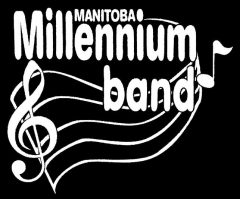Ah, half notes.
The problem with half notes that we see them and immediately think: Aah! a lingering peace from the hustle and bustle of the black ones!
But that is a lie. It’s a vicious, vicious lie, because what half notes really tend to do is drag. us. down. Down to the bottom of the ocean in muck, where we get sucked down beyond salvation – we’re all just lobsters. Hopeless, cold, lonely, lobsters. Or maybe clams. Nope – too happy. Lobsters it is.
What we really need to be thinking is this:
Half notes = High alert
Playing half notes an incorrect length – it’s usually too long (except in Bolero – there you’re probably cheating the note value) – really throws the whole band off. We all want to play together. It hurts us all – and our audience’s ears – when we don’t! But, I’m right – even when I’m wrong, I’m still right. You MUST follow me. I am your (plural) safety net and I can’t help anyone if you’re going all rogue and independent on me.
It is every single person’s responsibility to pay attention to whether they are with the rest of the band, and if you (singular) are not, it is your job to get back on track as quickly as you can. How, you may ask? Well, start by looking at the crazy lady at the front who’s waving and dancing. She’s trying to help. Honest. Also, listen to what’s happening around you – if your note sounds wrong (as in, not what you usually hear) you’re likely playing your half notes too long, so you’re probably a bit behind everyone (except in the aforementioned Bolero – in that case, you’re probably close to a full bar ahead).
In most cases, half notes are not the most interesting thing happening, so they should be approached with a certain sense of reservation. However, when they are played dynamically appropriately – not overpowering the melody – and shaped in relation to both the structure of the melody and their own pattern, they not only support the melody, but enrich it. (A side effect is that you will likely make me cry from the beauty of it. That might actually be a good game to play: can we see Elizabeth’s tears today? For my part, I’m not ashamed that beautiful music makes me weep, so consider the gauntlet thrown!)
Bear in mind that music has to flow forward – even longer notes have to have some sense of direction (either building towards something or pulling away from it). There is always a musical momentum. You may have noticed that I am prone to playing fast and loose with respecting tempo markings. This is generally a conscious choice on my part to help you find the natural internal motion of the piece (most pieces have a sweet spot for tempo where it’s easiest to feel that momentum).
One way to help you find the momentum is to look for anacruses (pick-up notes) within your line. Trust me, they are there – even if you have whole notes. Firstly, figure out where the line is going – what’s the most important note of the phrase? Then it’s a matter of determining what leads to that note – is it a step-wise motion or does it jump around a bit? (There are other hints that can help as well, but they would require a much more intense lecture on Music Theory than I am prepared to give today. If you have questions about a specific line, please feel free to email me with some details so I can look it up, or speak with me before/after/at rehearsal break and we can talk then). Incidentally, this sort of analysis works at a meta level (where is the whole piece going?) as well, which is something that I do as part of my role (in case you were in doubt that I think about these things at 11:00 pm on a Saturday night when I should be asleep).
So, to tie all this chatter together for you, here are the main considerations when approaching half notes:
– Keeping time – this means subdividing your counting, feeling the eighth notes (if it’s moderate to slow pace) or quarter notes (if it’s in cut or a quicker pace), and placing your notes carefully in time.
– Supporting – this means playing sensitively, balancing dynamic level across the band so as not to overpower the melody, and ensuring that there’s coverage (i.e. no unwritten gaps in the sound).
– Shaping – this is about knowing the direction (often slight dynamic variation within a short section) of your line and how it relates to the melody. Shape your phrase in awareness of how the interactions should happen – your own shaping should support and enhance the piece and shouldn’t ever be at the expense of the melody line.
As always, I’m happy to talk about this in more detail if you have any specific questions or concerns.
Happy playing!
Elizabeth.

The challenge is on – lobsters will try to make Elizabeth weep at the next rehearsal!